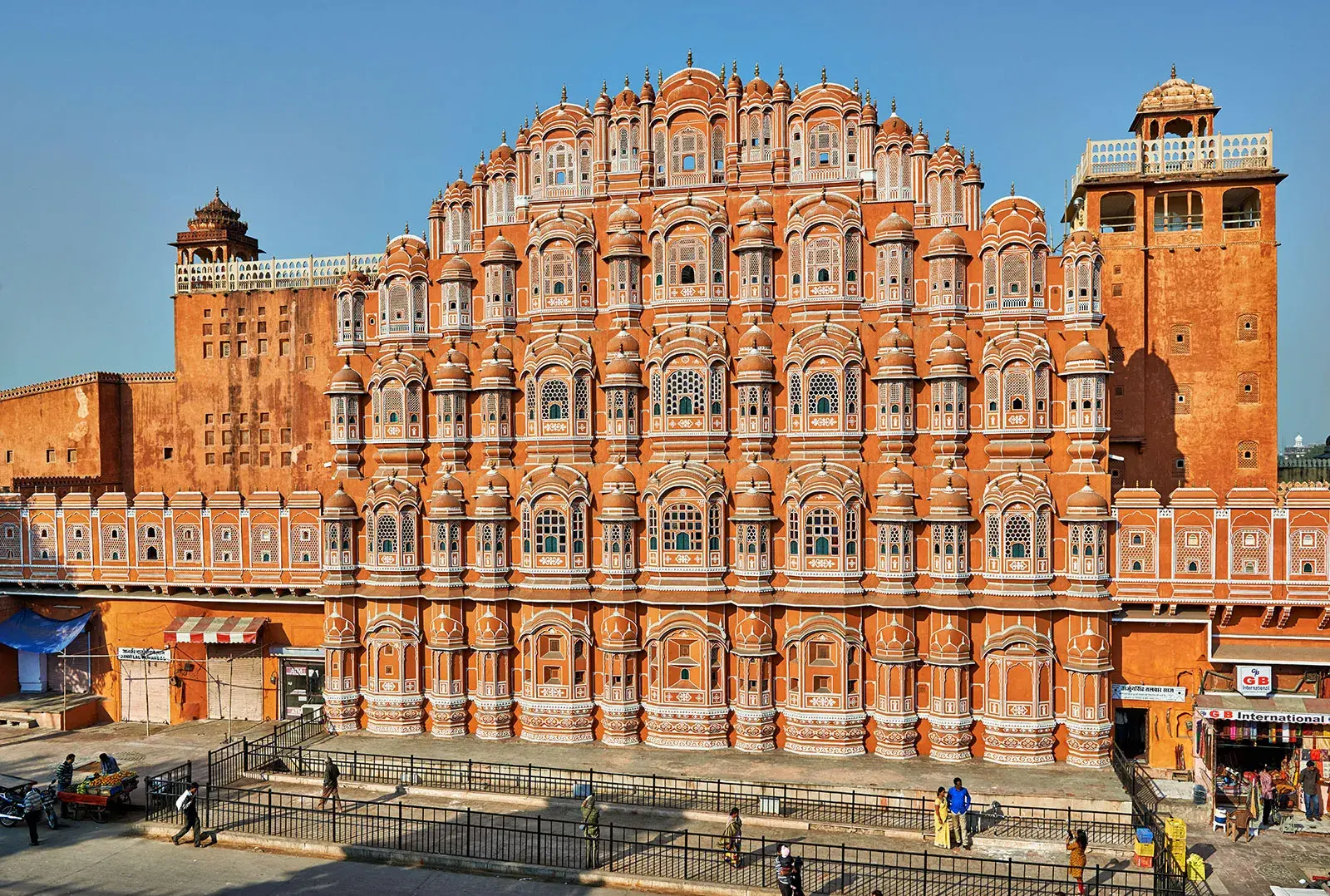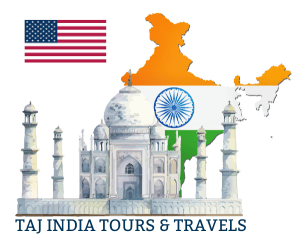
Jaipur
Jaipur, fondly known as the Pink City, is a budding city and the capital of Rajasthan. It has romance built into its walls, some of which date back over 1000 BC. Jaipur boasts fantastic forts, temples, palaces, and numerous narrow but colorful streets – all waiting to guide you through the by-lanes of this most royal city of Rajasthan.
There are many interesting places to see in Jaipur, but if you are in a hurry, don’t forget to visit at least these ones:
Amber Fort: Jaipur offers a golden chance to see how the royals lived their lives. A must-visit place, Amber Fort has many surprises – one of which is the chance to go up to the entrance on an elephant. The gardens are well-maintained and provide a good backdrop for elegant photographs. A visit to the Amber Fort should be avoided during Dussehra and other festivals when it becomes extremely crowded.
Sheesh Mahal: For those who want to see amazing mirror work, Sheesh Mahal is the place for you. Located within the Amber Fort, it features a huge hall decorated with mirrors. The mirror work covers the entire ceiling and walls, reflecting all sorts of light. The glass was specially imported from Belgium, and workers labored for years to carve beautiful designs that reflect even a small ray of light. The entire Sheesh Mahal is beautifully crafted and still stands with pride, making it a thrilling experience.
Hawa Mahal: The iconic Hawa Mahal of Jaipur was built in 1799 by Maharaja Sawai Pratap Singh. It has over 900 small windows made to allow the royal ladies to peek and see life on the road and outside their palace without being seen. The architecture of the palace resembles a pyramidal monument extended up to five stories. If you plan to stay in Jaipur for a few nights, take some time to see Hawa Mahal after dark. With its lights and colorful mirrors, it looks even more stunning than you could have ever imagined.
City Palace: A place of historic beauty, City Palace opens its gates for everyone to see the royal lifestyle. It features beautiful architecture and is maintained privately. To get the best tour, hire a guide who will take you through the entire palace in about 45 minutes to one hour. The entrance has huge doors, providing a great place to start your photography tour as well.
Govind Devji Temple: A special temple for the worshippers of Shri Krishna, this temple is within walking distance from Hawa Mahal, City Palace, and Johri Bazaar. As one of the oldest temples in Jaipur, Govind Devji Temple attracts devotees from all over India, some coming from as far as Kolkata to glimpse their beloved Krishna. The temple opens in the evening at 5:45 pm and closes its gates at 7:00 pm for the general public, so a little crowd is expected. It is said that the idol of Shri Krishna looks exactly like his incarnation on earth. The deity is offered 'Aartis' and 'Bhog' seven times when the temple is closed to the public for darshan.
Panna Meena ka Kund: An old stepwell built in the late sixteenth century, Panna Meena Ka Kund is both beautiful and historic. It is right next to Amber Fort and is a marvel to look upon. The reservoir has around 300 steps, though the entrance is now closed to the public due to a recent accident.
Jaigarh Fort: Home to the biggest cannon, Jaigarh Fort was built by Rajputs to serve as the center of their artillery production in 1720. Though the cannon was never used, owing to good relations between the Rajputs and Mughals, it was kept in active form to keep enemies at bay. The fort is built with red sandstone and spread around an area of 3 kilometers by 1 kilometer. Additionally, there’s a huge garden within the surrounding walls which houses some of the rarest plants found in Jaipur. The fort features various palaces used for multiple purposes, with architectural features resembling the Indo-Persian style with lime mortar plaster. It also has a museum dedicated to the Royalty of Jaipur, displaying a fine collection of clothes, weapons, stamps, and other artifacts from past centuries.
Jantar Mantar: India has a total of four Jantar Mantar, and the biggest of them is situated in Jaipur. Completed in 1738, it is one of the largest sundials in the world. Located within walking distance of the City Palace, Jantar Mantar represents the advancement of ancient astronomy. The monument features stone and brass instruments designed based on the principles of Vedic Hindu texts and Islamic astronomy data. Jantar Mantar offers a peek into astrological advancements and the amalgamation of ideas from different religions and social beliefs. The best time to visit Jantar Mantar is early in the morning when it is relatively crowd-free. If you are not familiar with the place, hire a guide who can explain how time calculations were done by observing the shadows of various stones and walls. The surprising fact is that the royal astronomy from over two centuries ago is still so accurate.
On your next trip to majestic Rajasthan and its wonders, don’t forget to add Jaipur to your list. It might not look too ravishing from the outside, but trust us – once you visit, it will recharge your memory with its exquisiteness and beauty. To know more about visiting Jaipur, Click Here And Let Us Plan Your Vacation.
